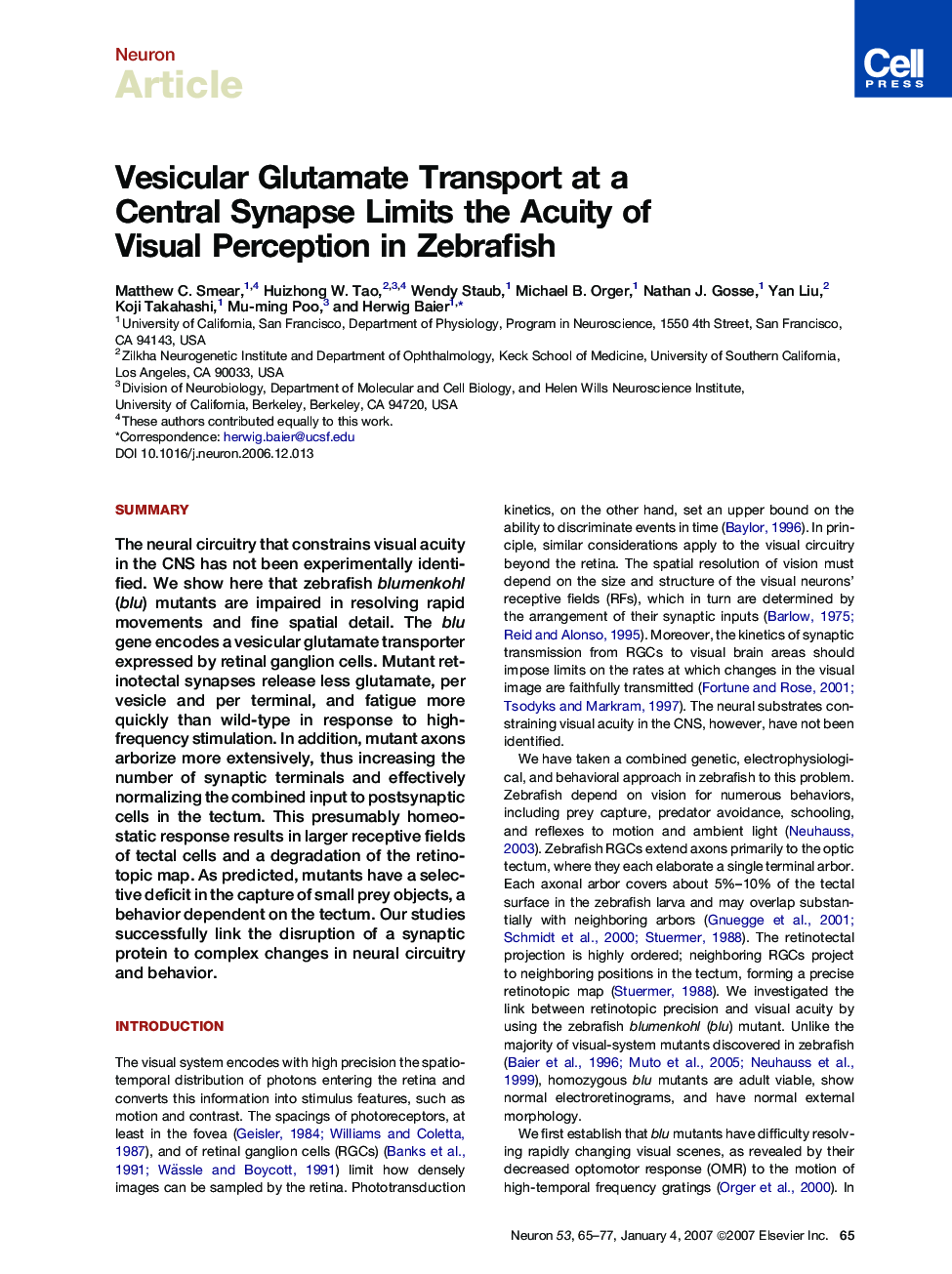| Article ID | Journal | Published Year | Pages | File Type |
|---|---|---|---|---|
| 4323236 | Neuron | 2007 | 13 Pages |
SummaryThe neural circuitry that constrains visual acuity in the CNS has not been experimentally identified. We show here that zebrafish blumenkohl (blu) mutants are impaired in resolving rapid movements and fine spatial detail. The blu gene encodes a vesicular glutamate transporter expressed by retinal ganglion cells. Mutant retinotectal synapses release less glutamate, per vesicle and per terminal, and fatigue more quickly than wild-type in response to high-frequency stimulation. In addition, mutant axons arborize more extensively, thus increasing the number of synaptic terminals and effectively normalizing the combined input to postsynaptic cells in the tectum. This presumably homeostatic response results in larger receptive fields of tectal cells and a degradation of the retinotopic map. As predicted, mutants have a selective deficit in the capture of small prey objects, a behavior dependent on the tectum. Our studies successfully link the disruption of a synaptic protein to complex changes in neural circuitry and behavior.
